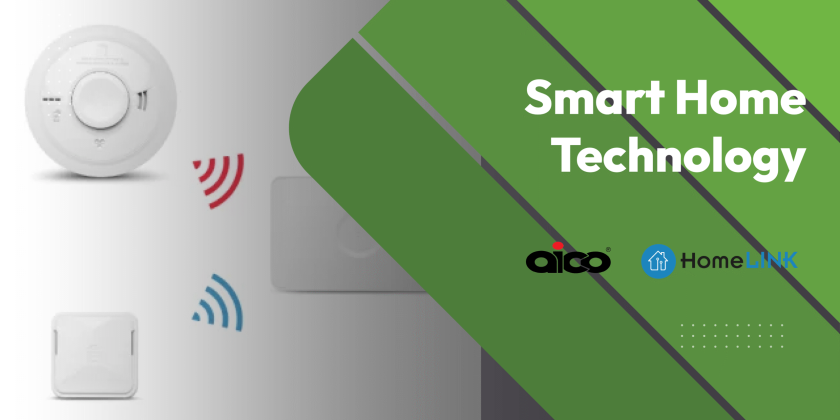As renewable energy sources become increasingly popular, many homeowners and businesses are considering adding battery storage to their energy systems.
The question, “Do I need battery storage to store energy?” is becoming more common as people seek to maximise their energy efficiency and reduce reliance on the grid.
With the potential to store excess energy generated from solar panels, battery storage systems offer significant benefits.
This guide aims to provide a practical overview to help you determine if battery storage is the right choice for your needs.
Understanding Battery Storage
What is Battery Storage?
Battery storage systems are devices that store electrical energy for later use. They are often integrated with solar panels. They capture excess energy produced during peak generation times and store it for use during periods when production is low or demand is high.
This ensures a steady supply of electricity and reduces the need to rely on the grid. The most common types of batteries used for storage include:
- lithium-ion
- lead-acid
- flow batteries.
Each type has advantages and limitations. Understanding how battery storage works and the types of batteries available will help you make an informed decision about whether to invest in a system for your home or business.
How Battery Storage Works
Battery storage systems work by converting electrical energy into a form that can be stored, usually chemical energy, and then converting it back into electrical energy when needed.
When solar panels generate more electricity than required, this excess energy is directed to the battery. Inside the battery, a series of chemical reactions occur, allowing the energy to be stored until it is needed.
When demand for electricity increases or generation decreases, the stored energy is converted back into electricity and supplied to the home or business.
This process helps balance energy supply and demand, ensuring a consistent power supply. Battery storage systems are typically controlled by sophisticated management systems that optimise charging and discharging cycles, ensuring efficient use and longevity of the battery.
Different Types of Battery Storage
There are several types of batteries commonly used for energy storage.
Lithium-ion batteries are the most popular due to their high energy density, long lifespan, and relatively fast charging times. They are well-suited for residential and commercial applications.
Lead-acid batteries, although older technology, are still used because they are cost-effective and reliable for short-term storage needs. However, they have a shorter lifespan and lower energy density compared to lithium-ion options.
Flow batteries, another option for storage batteries, are known for their scalability and ability to discharge over long periods. They are often used in large-scale applications, such as grid storage.
Evaluating Your Energy Needs
Assessing Household Energy Usage
Understanding your household energy usage is a crucial step in determining whether battery storage is right for you.
Start by reviewing your electricity bills to establish patterns of energy consumption. Identify peak usage times and the total energy consumed each month. Many utility companies provide detailed reports or online tools to help track your usage trends.
Additionally, consider the appliances and devices that contribute most to your energy consumption. Heating, cooling, and major appliances like washing machines and refrigerators often account for significant portions of your bill.
By analysing this data, you can estimate the amount of energy storage needed to offset your reliance on the grid. This assessment will also help you decide on the size and type of battery storage system that would best suit your needs.
Calculating your household energy usage accurately will ensure that you make an informed decision about integrating battery storage into your energy plan.
Identifying Peak Energy Times
Peak energy times refer to periods when electricity demand is highest, often resulting in higher energy costs. Typically, these times occur in the early evening when households return from work and school, and energy use spikes due to lighting, cooking, and heating.
Monitoring your daily and weekly usage patterns can reveal these high-demand periods. Smart meters and energy management systems can provide real-time data, helping to pinpoint precise peak times.
Once identified, you can programme your home battery and storage system to discharge energy during these periods, reducing your reliance on grid electricity and potentially lowering your energy bills.
By carefully tracking and responding to peak energy times, you can maximise the efficiency and cost-effectiveness of your battery storage investment.
Do I Need Battery Storage?
Determining whether you need battery storage depends on several factors. Consider your energy goals first. If reducing electricity bills and lowering carbon emissions are priorities, battery storage can be beneficial.
Evaluate your current energy setup; if you already generate renewable energy, such as from solar panels, battery storage can help to maximise its use.
Finally, assess your long-term plans. If you anticipate growing energy needs or adopting more renewable solutions, investing in battery storage now may prove advantageous.
Benefits of Battery Storage
Energy Independence and Savings
By storing excess energy generated from renewable sources, such as solar panels, you can reduce your reliance on the national grid.
This independence means that during peak demand times or grid outages, you can draw power from your stored reserves, ensuring a continuous energy supply.
Additionally, using stored energy during peak times can lead to considerable savings on electricity bills. Many utility companies charge higher rates during these periods, so offsetting this with your own stored energy can reduce costs.
Battery storage can also help you save money if you take advantage of time-of-use pricing, where electricity rates vary throughout the day. By strategically using stored energy when rates are highest, you can optimise cost savings.
Enhancing Solar Panel Efficiency
Solar panels produce energy during daylight hours, often exceeding the immediate consumption needs of a household. Without storage, this excess energy is typically sent back to the grid, often at a lower compensation rate.
By incorporating solar power into a battery storage system, you can capture this surplus energy and store it for later use, such as during the night or on cloudy days when solar generation is minimal.
This not only maximises the utilisation of the solar energy you generate but also increases the return on investment for your solar panel system. Furthermore, storing energy locally minimises transmission losses associated with sending electricity back to the grid.
Environmental Impact Considerations
Battery storage systems contribute positively to environmental sustainability by facilitating greater use of renewable energy. By storing excess energy from renewable sources, such as solar or wind, batteries help reduce reliance on fossil fuels, which are major contributors to greenhouse gas emissions.
However, it’s important to consider the environmental impact of battery production and disposal. Manufacturing processes solar batteries can involve resource-intensive materials, and improper disposal can lead to environmental harm. Therefore, selecting batteries with recyclable components and longer lifespans is advisable. As technology advances, the development of more sustainable battery options continues to improve. Overall, when managed responsibly, battery storage plays a crucial role in promoting a cleaner and more sustainable energy system.
Potential Drawbacks and Limitations
Initial Costs and Investments
The purchase and installation of a battery storage system can be costly, with prices varying based on the type, capacity, and brand of the battery.
Additionally, associated costs such as inverters, installation, and potential upgrades to existing electrical systems can add to the cost.
Prices have been gradually decreasing due to technological advancements and increased competition. It’s important to consider the long-term financial benefits solar battery has, such as energy savings and potential incentives, against these upfront costs.
Maintenance and Longevity Issues
Battery storage systems, while generally reliable, require regular maintenance to ensure optimal performance and longevity. Over time, all batteries degrade, leading to reduced efficiency and storage capacity.
Factors such as charging cycles, temperature fluctuations, and usage patterns can impact a battery’s lifespan. Lithium-ion batteries, for instance, typically last between 5 to 15 years, depending on how they are maintained and used.
Regular inspections and software updates are necessary to monitor the health of the battery and address any issues promptly. Additionally, some battery types, like lead-acid, may require more frequent maintenance, such as checking electrolyte levels.
It’s also important to consider the potential costs associated with replacing or upgrading batteries as they age.
Do I Need Battery Storage?
While battery storage can enhance energy independence, efficiency, and environmental sustainability, the initial costs and ongoing maintenance requirements are significant considerations.
If you’re committed to reducing your carbon footprint and maximising the use of renewable energy, battery storage is a worthwhile consideration. Ultimately, the decision should be based on your energy goals and finances.
Making the Right Decision
Cost-Benefit Analysis
Conducting a cost-benefit analysis is crucial when deciding on battery storage. Begin by calculating the initial investment, including the cost of the battery, installation, and any necessary system upgrades.
Compare this to the potential financial benefits, such as savings on electricity bills. Evaluate how much you can save on electricity costs by using stored energy during peak times or by reducing reliance on the grid.
Additionally, consider the environmental benefits, such as reduced carbon emissions, which although not directly financial, contribute positively to sustainability goals.
Factor in the lifespan of the battery system and potential replacement costs. The impact of energy independence and security should also be included in your assessment.
By analysing these factors, you can make an informed decision about integrating battery storage into your energy strategy.
Long-term Energy Goals
If switching to a completely renewable energy system is a priority, battery storage becomes an important part of a solar system.
Consider future expansions of your energy setup, such as adding more solar panels or integrating electric vehicle charging. Battery storage can support these expansions by providing additional capacity and flexibility.
Furthermore, think about the trends in energy prices and policy changes that may impact the financial feasibility of battery storage. By clearly defining your long-term goals, you can make strategic decisions that not only meet current needs but also position you advantageously for the future.
Do I Need Battery Storage?
If your household or business already utilises renewable energy sources, such as solar panels, battery storage could enhance efficiency by storing excess energy for later use without solar panels, thus reducing reliance on the grid.
Evaluate your financial readiness to invest in battery storage, considering both upfront costs and long-term savings. Also, think about environmental priorities and whether reducing your carbon footprint is a key objective.
If energy independence and sustainability are important, the benefits of battery storage may outweigh the financial costs. Ultimately, the decision hinges on how well battery storage aligns with your energy usage patterns, financial capacity, and long-term objectives.
By thoroughly assessing these factors, you can make a confident, informed decision about incorporating battery storage into your energy plan.



